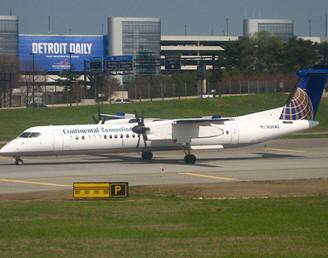|
|||||||||||||||||
|
|
|
|||
|
FAA Finalizes New
Ice Protection Rule By Mike Mitchell |
||||
 |
August 22, 2011 - The Federal Aviation Administration
(FAA) has issued a new rule to enhance aviation safety
by requiring scheduled airlines to install ice detection
equipment in their existing fleets or to update their
flight manuals to make sure crews know when they should
activate their ice protection systems.
This comes after the deadly crash of Colgan Air
Flight 3407. Colgan Air Flight 3407, marketed as
Continental Connection under a codeshare agreement with
Continental Airlines, was a daily U.S. regional airline
commuter flight from Newark Liberty International
Airport in New Jersey to Buffalo Niagara International
Airport in New York State. A Bombardier DHC8-402 Q400 operating as Flight 3407 departed late from Newark on February 12, 2009, at 9:20 p.m. EST. Shortly after the last communication by the flight crew with approach control at 10:17 p.m. (03:17, February 13 UTC), the plane stalled. |
|||
|
The stall occured less than a mile northeast of the locator outer marker while on an ILS approach to Runway 23 and crashed into a house in the northeast Buffalo suburb of Clarence Center, about 9.3 kilometres (5.0 nmi) short of the runway threshold.
A total of
50 people were killed including the two pilots, two flight
attendants, 45 passengers (including one off-duty pilot), and
one person in the house into which the plane crashed. It was the
first fatal crash of a commercial airliner in the United States
since the crash of Comair Flight 191 in August 2006 which killed
49. The National Transportation Safety Board concluded that
cause of the crash was pilot error in icing conditions.
?We want
pilots to have the best technology available to detect icing
conditions so they can take the steps necessary to ensure
passenger safety,? said U.S. Transportation Secretary Ray
LaHood.
For
aircraft equipped with an ice-detection system, the new rule
mandates that the system alert the crew every time they need to
activate ice protection. The system can either automatically
turn on the ice protection or pilots can manually activate it. |
||||


